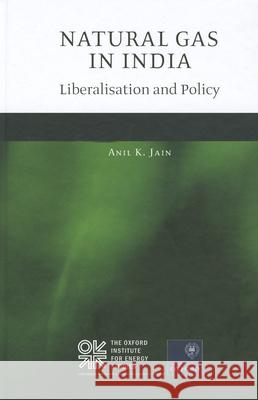Natural Gas in India: Liberalisation and Policy » książka
Natural Gas in India: Liberalisation and Policy
ISBN-13: 9780199697380 / Angielski / Twarda / 2012 / 256 str.
India's energy consumption pattern is in transition. The share of gas in the primary commercial energy mix is likely to rise from its current level of 8 % to 20 % by 2024-25. Large gas discoveries in the eastern offshore basin, which came into production in 2009, have doubled domestic supply. However, national gas policies, which were formulated during an era of shortages, have only recently begun to readjust to the emergence of gas as a potential competing fuel in India's energy basket. The Indian gas sector has often been viewed by international observers as an uncertain environment full of policy detail. In light of recent policy changes aimed at cultivating a market-oriented form of functioning, there is a real need for understanding the dynamics of policymaking in the sector. This book suggests that there is a 'bigger story' in the Indian gas sector, and attempts to guide the reader through the reasoning behind its policy construct. The book is organised in two parts; the first part sets out the factual basis for a policy discussion, through an incisive analysis of supply options, and of three major demand assessments for gas. It concludes that the market for Indian gas has failed to develop despite the fact that conditions for a market exist. The second part investigates the reasons for this failure through scrutiny of major government policies. It sets out how there are seemingly conflicting aims in the government's 'Gas Utilisation Policy', and investigates the set of policy tools that have been adopted to reconcile these aims, thus demystifying much of the complex policy matter on Indian gas. The analysis then goes further into the investigation of the main variables which shape the potential future of the Indian gas market, through a study of gas pricing. The conclusions draw out a set of suggestions on potential issues which require resolution or further analyses, in order for gas to fulfil its potential role in India's economic progress.











